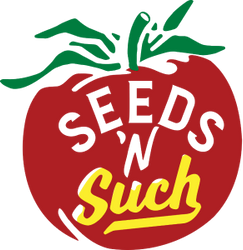
8 Perfect Companion Plantings
We all know that monotony is boring. Who wants to see acres and acres of the same thing, when you could be looking out at a swathe of color and texture? Better yet, who wants to eat the same thing, meal after meal?
Variety isn’t the only reason you should plant these different crops together. Intercropping, or companion planting, different species together actually reduces pest pressure and minimizes disease–resulting in healthier, stronger plants.
You were going to plant all of these varieties anyway–why not plant the suggested pairs together, and see if your garden isn’t that much more productive this year?
-
Peas and parsley
Peas and parsley were made for each other! Parsley is technically a biennial herb, usually grown as a hardy annual. Because parsley is frost tolerant, it pairs well with other cold-hardy vegetables like peas. Give peas a trellis to climb, and plant parsley at their base–the peas will grow up and the parsley will grow out. Once the peas are bigger and the weather is warmer, parsley benefits from the shade cast by the pea vines.
Parsley is known to attract beneficial insects to the garden, so the nutritious herb makes a great companion plant for many other vegetables, including tomatoes, peppers, onions, and carrots. Peas, a member of the legume family, fix nitrogen in the soil, which benefits all plants.
-
Tomatoes and carrots
This pairing may seem a little strange, but this relationship works similarly to peas and parsley. Tomatoes grow up a trellis and carrots grow down into the earth, not taking up too much space above ground. The carrots’ roots loosen the soil, making it easier for the tomatoes to absorb water and nutrients.
The tomato plants, once they are mature enough, provide some afternoon shade on the carrots, protecting them from the harsh summer heat and trapping moisture at the base of the plants.
-
Peppers and basil
Basil’s aromatic foliage attracts beneficial insects while also repelling pests. This culinary herb benefits most vegetables in the garden, particularly benefiting tomatoes, carrots, and turnips by offering some protection from pest damage.
Peppers, especially, love being planted close to basil, as the basil shades out weed growth at their base and helps retain moisture that the pepper plants can use.
-
Cucumbers and marigolds
Marigolds are a gorgeous addition to the vegetable garden with their bright, bold colors. But that’s not all marigolds are good for–their unique fragrance repels cucumber beetles and other pests that terrorize melons, allowing these vegetables to grow and fruit to their full potential.
Edge your vegetable patch with marigolds and watch aphids dissipate by the day. Marigolds are known to attract ladybugs, predatory insects that will make a quick meal of aphids, mites, and other pests.
-
Onions and carrots
Onions can be particular about their neighbors, but onions love carrots. The pungent onion scent actually repels the carrot fly, a pest whose larvae will desecrate a carrot crop (or celery, or parsnip) in no time.
In case you need another reason to tuck a few extra onions in your garden, onions (and their close relatives, garlic and chives) naturally deter aphids. Just take care not to plant onions next to legumes like beans and peas, as onions will inhibit the growth of these vegetables.
-
Lettuce and mint
Toss a few mint springs in your spring salad mix and you’ll understand why these vegetables go together–in the garden and on the plate. Mint’s sweet fragrance is said to repel a number of pests, including insects and rodents. Many pesticides are made from mint oil, but the plant itself naturally deters common garden terrors like ants, aphids, slugs, and spider mites.
Both lettuce and mint prefer cooler temperatures and regular watering, making the two a natural planting pair with similar care needs. Bear in mind, however, that mint is a vigorous grower that spreads quickly. If you can regularly trim back your mint patch, you’ll be able to grow it in the garden–but you’d rather play it safe, plant mint in a container or a raised bed to keep the plant under control.
-
Broccoli and Swiss chard
Swiss chard is a leafy green with a robust root system that takes up a decent amount of space. Luckily, broccoli and other vegetables in the Brassica plant family tend to have shallow roots, so broccoli and chard are excellent garden companions.
Swiss chard and broccoli also thrive under similar growing conditions–you can plant either crop in the early spring or late summer for a fall harvest. Both broccoli and chard tolerate a light frost, with the cold temperatures making for a sweeter crop and a better-tasting dinner.
-
Beans, squash, and corn
Possibly the most famous companion planting of all, Indigenous Americans were the first to discover that the “Three Sisters” are made to grow together. The corn shoots up first, providing a natural trellis for the beans to climb. The squash germinates later and sprawls around the base of the plant to block out weeds and retain moisture, protecting all three plants from heatwaves and drought.
Conclusion
Plants, like people, are meant to grow in community. There are some plants that are natural pairs, protecting one another from pest pressure and disease–but the are other varieties that are too similar or compete with one another for space and nutrients.
There are a few general intercropping rules to follow–like, don’t plant onions next to beans–but outside of these few guidelines you really can’t go wrong. Pick out several varieties that you know you and your family will eat, and do your own companion planting experiment to see if you don’t make any new discoveries!
